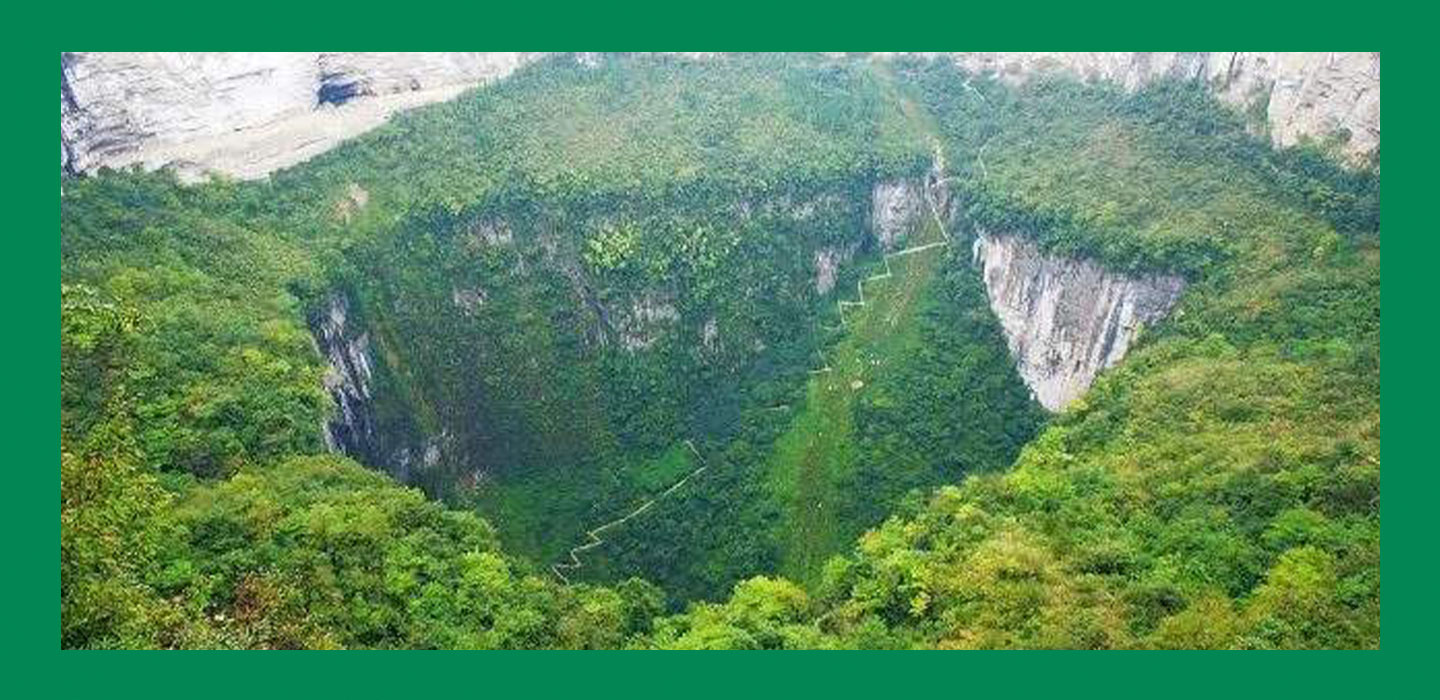請想像一下這個畫面:從一個寬大的圓形洞口邊緣往下看,這個洞口深入地底數百呎。
它看起來似乎是無底的,但實際上並不是。它的下面有一片地下森林在繁衍,隱藏著人類從未見過的新物種。這些「天坑」散布在中國的荒野中,只有最大膽和最好奇的探險者才會被它吸引。
在剛剛過去的今年春天,中國的科學家們發現了一個沉洞,下降至底部後揭開了一些驚人的發現:天坑內生長著超過一百呎高的樹木,裡面生物的多樣性令人驚訝,並可能存在新物種。在這個隱蔽的地方,植被高度達到了科學家的肩部。
這些沉洞,普通話稱為「天坑」,散布在中國的喀斯特地貌中。僅僅在廣西省的樂業縣,也就是此次發現的地方,就有30個這樣的坑洞。這種岩溶天坑不僅為珍稀或需要遷徙的物種提供了棲息地,而且還有助於補充含水層,即儲存地下水的區域。
我曾向中國的洞穴探險家了解過,他們擔心這樣的自然奇觀正在被肆意污染。中國有太多的洞穴,當地村民傳統上把它們當作垃圾場。這危及了許多只適應這些地區微妙條件的地方性物種。許多人擔心,如果不加強保護這些生態系統,一些物種甚至在被發現之前就會消失。
例如,目前中國是世界上洞穴魚種類最多的國家,科學家們認為在這種脆弱的環境中可能還有許多未被發現的物種。
好消息是,在這一最新發現之後不久,中國宣佈開設漢中天坑群國際研究院,以更好地了解這些天坑。
一些地方官員也在考慮是否將一些坑洞開放給旅遊業,以促進當地經濟。
但有些人也在評估這些地方的生態財富,並致力於先更好地了解這種環境。
這些「天坑」無疑是中國擁有的最令人難以置信和獨特的自然奇觀之一。希望它們所激發的神聖神秘感也能為保護它們起到一點幫助。
Imagine looking down from the edge of a wide, circular hole gaping hundreds of feet down into the earth. It may look bottomless, but it’s not: a subterranean forest thrives below, hiding new species never seen before by human eyes. These “heavenly pits” are scattered throughout China’s wilderness and attract only the most daring and curious explorers.
Hi, I’m Kyle Obermann, Nature Contributor for the China Current, showing China’s wild side.
This past spring, scientists in China dropped into a sinkhole, rapelling into a shocking discovery: trees over one-hundred feet tall and a surprising amount of biodiversity that is thought to possibly contain new species. Despite being so secluded, vegetation reached up to the scientist’s shoulders.
These sinkholes, called “heavenly pits” in Mandarin, are scattered throughout China’s karst landscape. Just in Guangxi Province’s Leye County alone, where the discovery was made, there are 30 such pits. Such karst sinkholes not only provide habitat for rare or migrating species but help recharge aquifers, areas that hold groundwater, as well.
I’ve spoken to spelunking scientists in China who are worried that such natural wonders are being wantonly polluted. There are too many caves in China that some local villagers have traditionally used them as trash dumps. This endangers the many endemic species that have specially adapted to the delicate conditions in such areas. Many are worried that without greater protection for these ecosystems, some species will disappear before they are even discoverd. For example, currently, China is home to the most species of cave fish in the world and scientists believe there may be still many undiscovered species in thiese sensitive environments.
The good news is that shortly after this most recent discovery, China announced the opening of the Hanzhong Heavelny Pit International Research Institute to better understand these pits.
Some local officials are also considering whether to open up some of the pits to tourism in order to boost the local economy. But some are also evaluating the ecological wealth of these places and working to understand their environments better first. These “heavenly pits” are certainly some of the most incredible and unique natural wonders China has. Hopefully, the sense of divine mystery they inspire will help protect them as well.

